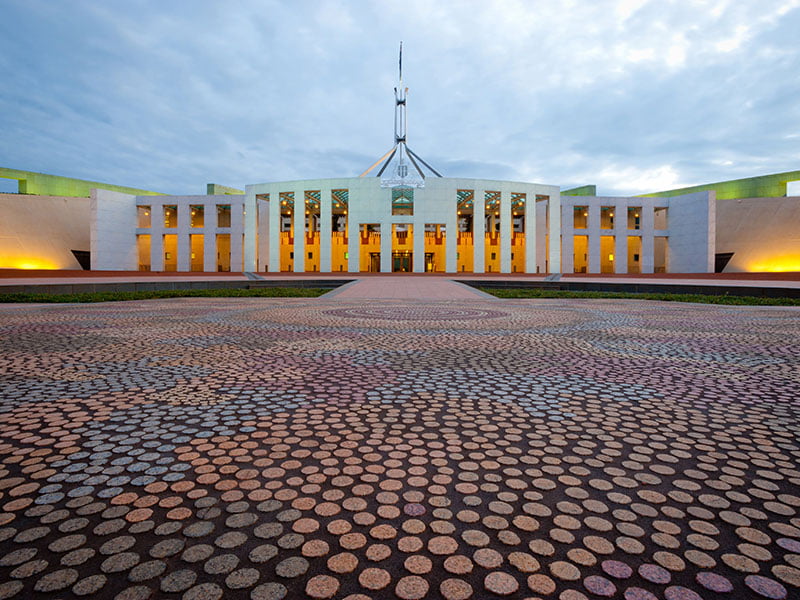A comprehensive, 500-page report aimed at improving innovation measurement to support better policy-making handed to the government in late 2019 has finally been released, revealing a number of “time-sensitive” recommendations which have been gathering dust for three years.
Conducted by then-Chief Scientist Alan Finkel and then-head of Treasury’s Regulatory Reform Taskforce Mark Cully from May 2018 to the end of 2019, the “Improving innovation indicators – better data to track innovation in Australia” report reviewed the existing metrics utilised by the government and sought to offer a better measurement framework going forward.
It was commissioned by the former Coalition government in response to Innovation and Science Australia’s 2030 report, which stemmed all the way back to the National Innovation and Science Agenda of late 2015.

Despite being handed to the former government in late 2019, it was never released or acted upon by the Coalition, and was released publicly this week by the new Labor government.
In the meantime, substantial public money has gone towards flagship industry, research and development and commercialisation policies, based on metrics and measurement that the leading public servants found had “major gaps” and were at times inaccurate.
The review found that the innovation metrics guiding the federal government focused primarily on tracking R&D activity, and often neglected significant innovation activities currently occurring which don’t involve R&D. This is having an impact on shaping policy in Australia, the review found.
“Since these activities are not being adequately measured, the policy levers potentially available to encourage them are not being fully exploited,” Dr Finkel and Mr Cully wrote in the report’s foreword.
The metrics review also found that intangible capital is more important than tangible capital in many development countries, but there are gaps in measuring it in Australia.
The authors offer a way forward with a series of recommendations to government.
These include to provide leadership on innovation measurement, efforts to address data gaps and ways to support the analysis of relevant new data.
“In adopting the recommendations of this review, the Australian government’s ability to measure, report on and compare the performance of the Australian innovation ecosystem with those of other countries will be greatly improved,” Dr Finkel and Mr Cully said.
The report comes with an imperative to act quickly on its comprehensive recommendations, but has been gathering dust for three years since it was handed to the Coalition.
“We will in coming years begin to run into natural limits on raising education levels, but we will never run out of ideas about how to do things better. It is innovation that will continue to drive increases in longevity, rein in and reduce carbon emissions, and reverse flagging growth in productivity and living standards,” the authors wrote.
“We can and must get better at innovation in Australia. A precondition for developing successful policy that supports innovation is that we measure innovation well and report on it regularly as part of an ongoing national conversation. What you measure, you optimise.”
Some of the recommendations put forward in the report in late 2019 were urgent, the authors said, especially in relation to the type of data collected by the ABS.
“Two of the high priority recommendations are time sensitive as they relate to ongoing ABS survey work. These two recommendations should be implemented quickly to align with the timeframes of existing activities that they are leveraging,” it said.
“Other recommendations are not as time-critical, however, the net benefits expected cannot be realised unless they are implemented.”
The recommendations included for the ABS to produce annual indicators of gross expenditure on research and development and business expenditure on research and developing, including estimates of R&D expenditure at a more granular level than currently available.
The ABS should also update current survey content related to business use of digital technologies to reflect new technological advances and measure the extent of technological diffusion and its impact on business performance, and review the collected business innovation data on offer, the report found.
The Innovation Metrics Review was a key recommendation from Innovation and Science Australia’s 2030 report, from late 2017. The government responded to this report and commissioned the review in the 2018-19 budget, with $1 million allocated to it.
The review aimed to make sure the large amounts of public money being spent on innovation-focused activities was being done based on comprehensive and accurate data.
While the report was handed to the former Coalition government in late 2019, it was never released during that party’s time in office. The new Labor government has now moved to make it public.
In the time since being handed the report pointing out key issues with innovation metrics and measurements upon which policy is being based, the Coalition launched a $1.3 billion manufacturing fund and a $2 billion plan to improve Australia’s commercialisation plans.
These were done before the former government acted on the recommendations from the report.
Do you know more? Contact James Riley via Email.

